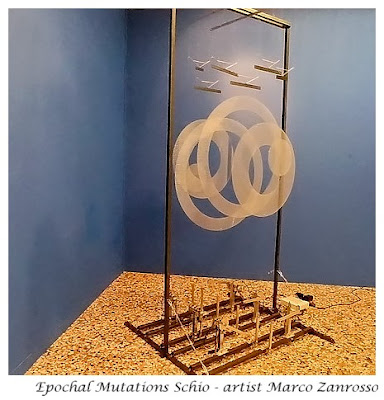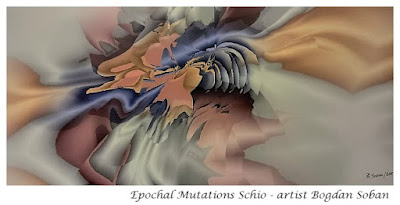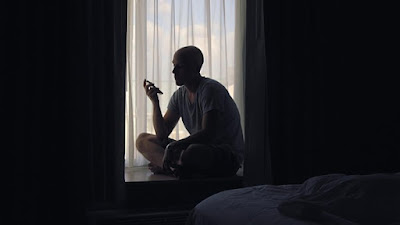There are some persons on the Social Media, whom I call the "Angry Indians". They can be broadly divided into 2 main groups. One group is of persons who claim that they are trying to safeguard Indian culture and Hinduism. Often they have furious fights amongst themselves and some of them are full of hate. They often act in ways contrary to the beliefs they claim to defend.
The other group of that of persons who define themselves as progressives or liberals. They claim that they are trying to safeguard India's plurality and diversity. However, their main aim seems to be to counter BJP-Modi, and they are not really concerned about anything else. Like the first group, often they also act in ways contrary to the beliefs they claim to defend.
I call these 2 groups, the Hindu Cultural Warriors and the Progressive Cultural warriors. They are also co-dependent on each other, creating spaces for their fights and constantly, feeding-off each-other. Here are some recent examples of issues around which they fight.
India Versus South Asia
Recently the American vice-president Kamala Harris greeted the "South Asians" on the Holi festival and the Hindu Warriors erupted in protests. Don't you know that Holi is a festival only of Hindus of India, they asked. They don't like to be grouped together with India's neighbours, especially with Pakistan. On the other hand, Prograssive Warriors love using the term South Asia, I think mostly because Western progressives like it and even more, because they know that the other group hates it.I need to confess that I am partial to Kamala Harris, since she has my mother's name, but my defence of the term "South Asian" has nothing to do with her name. I feel that the term "South Asian" acknowledges the common cultural identity of what was once known as Indian subcontinent. It is an identity which is shaped mostly by Indian culture, by its tradition of creating and accepting, even encouraging, blurred boundaries between the religions and its basic idea of "all the different paths lead to the same God".
All countries of South Asia have some Hindu, Sikh, Jain and Buddhists - in India and Nepal as majorities and in other countries as minorities. So wishing "Happy Holi" to all the people of these countries, did not seem like a bad thing to me and I can't understand why the Hindu Warriors don't like the term South Asians.
I can understand if conservative persons of other religions in "South Asia" resent Harris' greetings, because that is happening in some parts of the world. For example, there are many persons in Europe who get offended if you wish them for festivals which do not belong to their religions (for example, some Muslims get offended by the widespread Christian symbols in public spaces around Christmas and Easter times. So they are coming out with ideas like hiding Christmas trees in private spaces and saying "Season's greetings" instead of "Happy Christmas").
However, in India, festivals of all the religions are holidays for everyone and I have grown up in an environment where we wished everyone for all the festivals. For example, we always said "Happy Eid" or "Happy Gurupurab" and not "Happy Eid to Muslims" and "Happy Gurupurab for the Sikhs". So, if Harris is treating all South Asians as "people who celebrate Holi", why should the Hindu Warriors get offended? They should be jumping with joy!
Indian Festivals
Another issue which often leaves me confused is when Hindu Warriors get offended if someone dares to say anything about an Indian festival. I can understand the irritation about the extreme positions of some Progressives, who may be motivated by virtue-signalling - for example, their calls for "water saving" at Holi or for not making bonfires on Lohri and Holi. I can also understand the irritation because Progressives seem to focus only on Hindu festivals. However, I don't see the need to feel offended if someone says that Deewali can be hazardous for environmental pollution or the Durga and Ganesh statues pollute our rivers and lakes - I think that we need to look at these seriously and search for solutions.Compared to other religions, Hinduism is not bound by any one book or any one tradition, so it is easier for us to question our old cultural practices and start new ones. For example, over past decade, I have seen different variations about the way we celebrate Rakhi, the festival in which sisters tie a rakhi on their brothers' wrists. Now, for promoting greater inclusion, some of our family celebrates it by sisters tying rakhis on the wrists of both, their brothers and their wives; and, at Karvachauth, both husbands and wives together keep fast. If we can change our rituals and practices according to the changing times, it is good for us as a community, and is certainly better than to remain with outdated practices and ideas.
Therefore, if the fire-crackers of Deewali cause horrendous increases in pollution and problems for people with breathing difficulties, especially in the big cities, and there are calls to limit their use, why should that be seen as an attack on Hinduism? IMO, it does not matter that traffic or industry or crop-burning are more polluting. On Deewali evenings, even 30-40 years ago, when traffic and other kinds of pollution were much less than today, the doctors' clinics used to be full of people with asthma attacks and breathing difficulties. I can vouch for it because I practiced medicine in Delhi in the 1980s and saw it every year. So why can't we use this opportunity to find alternative joyful and fun ways to celebrate Deewali? BTW, even Europe has campaigns around Christmas and New Year to limit the use of fire-crackers.
If chemical-based colours used in Holi can cause skin allergies or dermatitis, they also end up in our sewage waters and rivers. Our rivers and lakes are usually in terrible shape at festival-times. Use of chemical colours painted on the Durga and Ganesh statues, are bad for our environment in the same way. The answer for Hindu Warriors should not be to shout about these as "attacks on Hinduism" but to think of how to promote a wider use of plant-based natural colours. If we can promote our local artisans and organic colours' and dyes' industries by doing that, it will be even better. It can become an economic opportunity and also in line with our scriptures, which ask for the respect of nature.
BTW, the fun of Holi and the joy of covering people's faces and clothes with colours is increasingly finding emulators in Europe. Vicenza, the provincial town near which I live, has been organising "Holi celebrations" during summers, where it is an opportunity for people to drink, dance and play with colours.
Hinduism - Hinduttva
Many of the Hindu Warriors are promoting a version of Hinduttva which seems to be inspired by the ultra-orthodox members of Christianity and Islam. Progressive Warriors are their partners in this, they also agree that Hinduttva means only that and nothing else. In fact for Progressives, the word Hinduttva belongs only to BJP, so they are fighting against it (they also think that the colour saffron belongs only to BJP and it should not be used).I personally think that the word "Hinduttva" or the "essence of Hinduism" can not be reduced to only one meaning. Hinduism has developed along thousands of streams of ideas and practices across different parts of India, which have a lot in common and at the same time, an incredible amount of variations. Thus, if our ideas about Hinduism are infinite, the meanings of Hinduttva should also be infinite. So, why do we accept to let the idea of Hinduttva be hijacked by these 2 groups?
IMO, a wide public debate on the meaning of Hinduttva would be beneficial to India. It might help us to understand which cultural values are shared by the majority of Hindus and by majority of Indians. Though I don't think that we shall ever reach a consensus, this discussion would be useful. Probably, this commonly shared idea of Hinduttva would be closer to the results of the PEW survey in 2021 on the Religions of India. This survey report had shown that in spite of different religions, most Indians hold similar common beliefs. The "common shared cultural values of India" should be valued and safeguarded. Such an understanding of Hinduttva will be forged by the encounters of different religions of India and it will acknowledge the blurred boundaries between the religions, as one of its key characteristics.
The more conservatives among the Hindu Warriors do not accept anything except their ideas about traditions of Hinduism. At the same time, the ideas of blurred religious boundaries and common traditions shared across religious diversities are increasingly non-acceptable also to Progressives. They often talk about India's past and how it gave a home to persecuted minorities of the world, to cry about the lost Ganga-Jamuni tehzeeb and the lost traditions of accepting religious diversities in ancient India. However, for today's world they do not want to look at the norms and processes governing the acceptance of other religions in India's past. Instead, they would like to follow the ideas of secularism developed in the west, which are based on separation of religious identities.
Insulting Religions
Some of the Hindu Warriors are always looking for people insulting Hinduism, to fight with them. If you use a Sanskrit verse from a Veda in a rock-song or if you print the picture of a Hindu God on a bag or god-forbid, a pair of shoes or underwear, they are waiting to rise up and start a campaign to destroy you. The Progressive Warriors, OTH, are willing to overlook all insults to Hinduism but are very careful in making sure that you do not insult the minority religions.I think that the idea of "insulting God" is stupid because it does not fit in with the basic ideas of Hinduism, which include the belief that God is within each of us. "Aham Brahm asmi", "Aham Shivam asmi", "So Hum" - all mean "I am" or that "God is inside me". In Shrimad Bhagvad Geeta, Krishna shows his Virat Roopa to Arjuna to explain that he is there in every particle of this universe. These fundamental ideas should guide Hindus to the respect of nature and respect of every human being.
So, how can anyone justify killings in the name of Gods or religion if one believes in this teaching? If one believes that God is inside every being, how can anyone justify discrimination towards any person because of his caste or his religion? And, once you accept that God is there in every particle of the universe, how can anyone offend God?
Recently, I had read about people being killed in Punjab for "offending" the Sikh sacred book Guru Granth Sahib. I wondered if they had forgotten the story of Guru Nanak's travel to Mecca? The story says that some men complained that Guru Nanak was sleeping with his feet pointing towards Mecca and thus offending God. So, Guru Nanak told them, shift my feet towards another direction where there is no God. The story says that in which ever direction they shifted Guru Nanak's feet, Mecca appeared on that side. Therefore, the idea of Sikhs who get offended because someone disrespects their holy book and kill those persons, seems incomprehensible to me.
It is a pity that such messages of "offending God" are also spoken by people wearing saffron, who talk of beheadings and killings. Their saffron clothes should signify spirituality and learning. Yet, they can refuse the temple drinking water to a thirsty boy, because he belongs to another religion and say that they are defending Hinduism. How can they defend Hinduism if they do not believe in the ideas contained in the Veda and Upanishads?
IMO, Progressives have facilitated this rise in the Hindu chauvinism by closing their eyes to similar ideas and practices of conservatives of minority religions by suggesting that only the majority bigotry matters. Every time, there is violence or aggression involving persons of different religions, it seems that the Progressive speak out only if victims are from the minority religions.
In The End
The Hindu cultural warriors are convinced that if they don't save Hinduism then it is in great danger. The progressive cultural warriors believe that the problems lies only with the Hindu chauvinists and they are blameless. The thinking of both the groups is a problem.Day before yesterday was 23rd March, the birthday of Doctor Saheb (Dr Ram Manohar Lohia), the iconic socialist leader, whose ideas had so much impact on me as a child. Today it is 25 March, the day on which papa had died 47 years ago at the age of 47. He was an associate of Doctor Saheb. If he was alive today, he would have been 94. Even after so many years, I miss him. I think that I would have loved to talk about the subject of this post to him and to Doctor Saheb - though I am not sure if they would have agreed with me!




















































